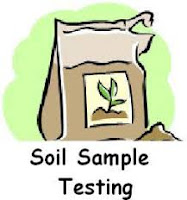Are you thinking of creating or converting to a backyard forest garden? Here's a bridge over a dry river rock bed that flows through a wildlife area - even in a small yard!
With the leaves on deciduous plants gone, you can see where you need structure, where you could plant evergreens, and where you need to prune. Here are 10 suggestions.
You also now have the time out from planting and harvesting when you can think about building structures, such as walkways, decks, raised beds, trellis/gazebos, or seating areas. Oh so much fun!!!
Dr. Douglas W. Tallamy has written a seminal book, Bringing Nature Home, on how to plan for the best ecosystem in your own yard. He has followed it with a second book, Nature's Best Hope, outlining how we can help grassroots conservation with native plants! While he is from the NE USA, his ideas are applicable here. This is the time..."one yard at a time!"
 Our winter sunshine is a plus in this, as you can get outside even in January and February to mess with lumber, edging or stepping stones (unless the snow hits).
Our winter sunshine is a plus in this, as you can get outside even in January and February to mess with lumber, edging or stepping stones (unless the snow hits). Go out and stare at your gardening space and draw a map of what is already there.
Consider what you’d like to keep and what isn’t working. Refer to your garden journal for successes and failures.
Envision what you’d like to see there and draw it in on your map.
Dream on about your 2023 yard and garden!







